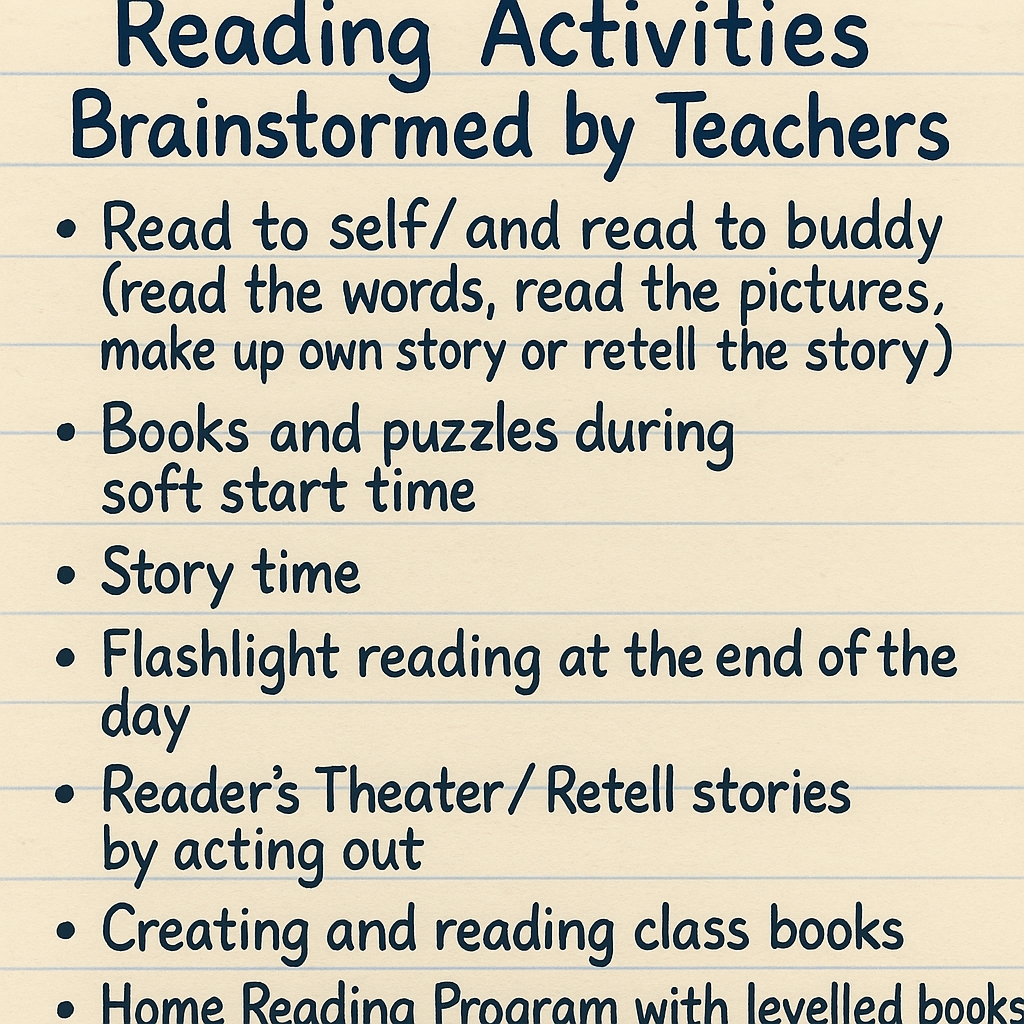J.T. Brown Elementary 24-25
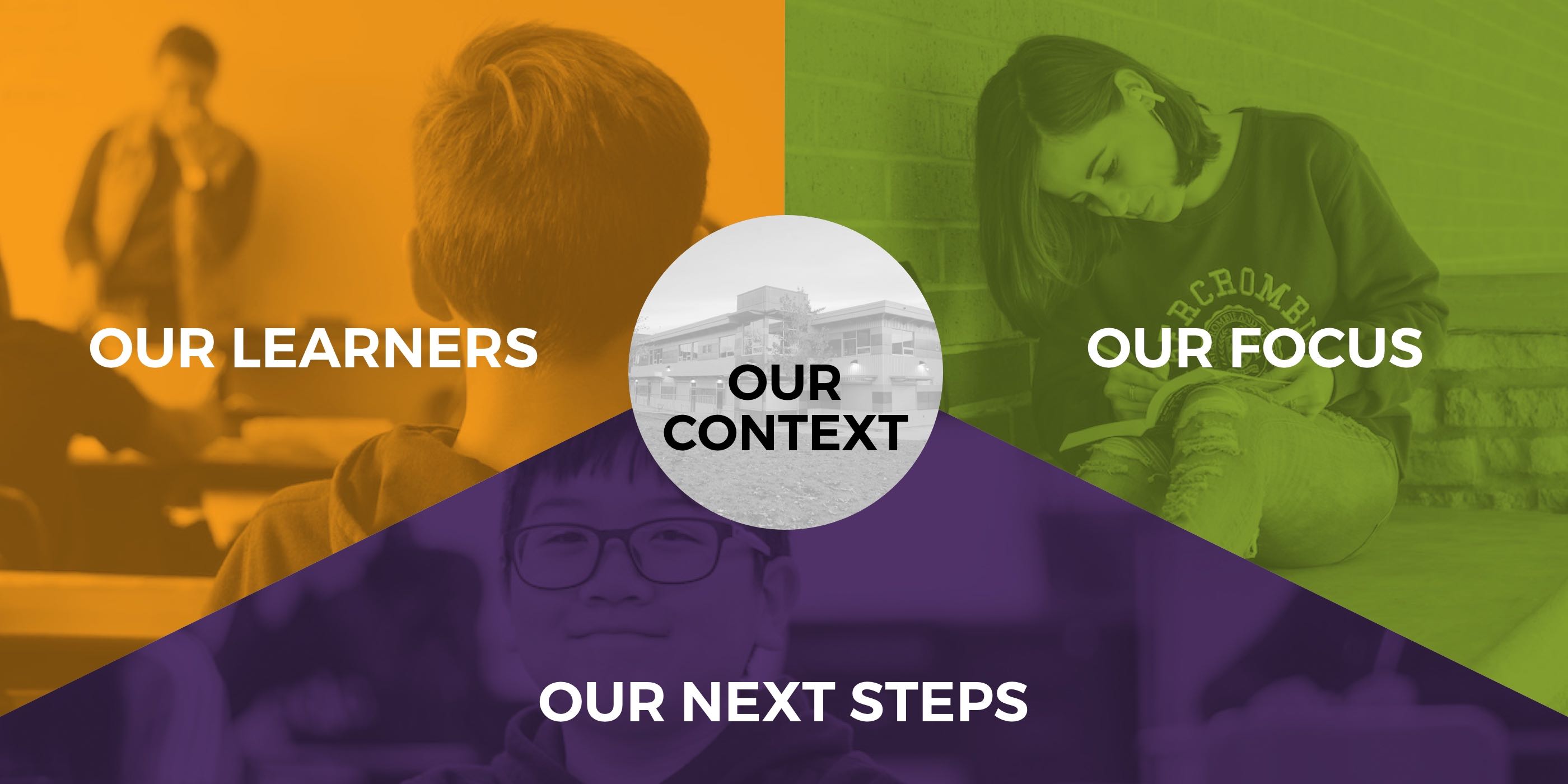

OUR CONTEXT
JT Brown Elementary is at the heart of a small and diverse community. The playground is a hub of the neighbourhood and is consistently busy after school hours with students, future students and their families. Many extended family members including grandparents, aunts and uncles, gather at JT Brown to connect and socialize.
The learners at JT Brown Elementary are diverse and we have many students who speak more than one language. More than half of our students are English language learners ranging from beginning to bridging. More recently, we have noticed an increased diversity in the languages spoken at home other than English.
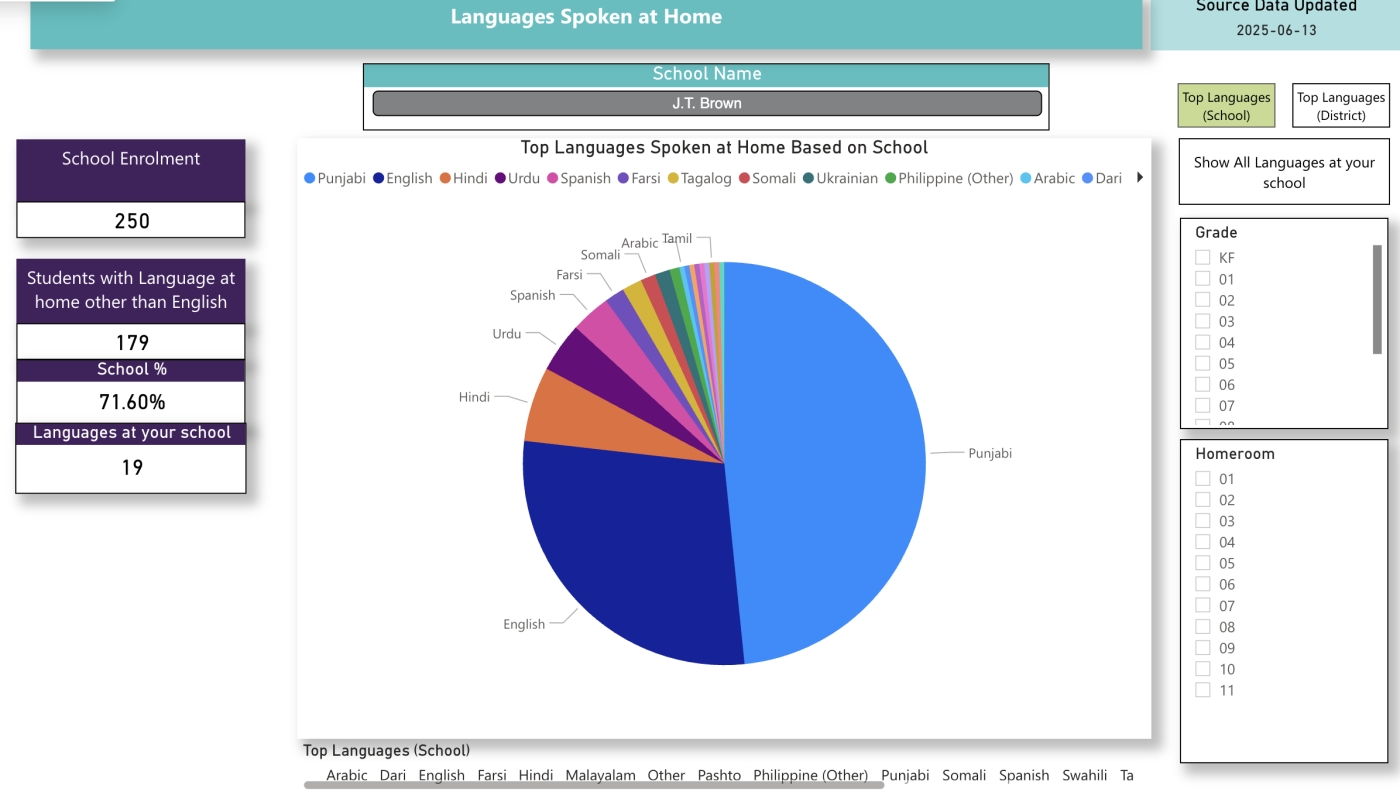
At JT Brown Elementary, we strive to create a climate of belonging and connectedness. Our priority is to make all students feel welcome, and to make sure their voice is heard. Many of our students are new to Canada and both staff and students are always excited to welcome new families to the community. We work closely with district and community organizations such as the Welcome Center to help support families as they settle in Canada.

We love to learn about, and celebrate the diverse cultures in our community. Students are proud of their culture and excited to share what they love most. Students are very motivated to share about their cultures, and to learn about others' customs. We often share about diverse celebrations from around the world.
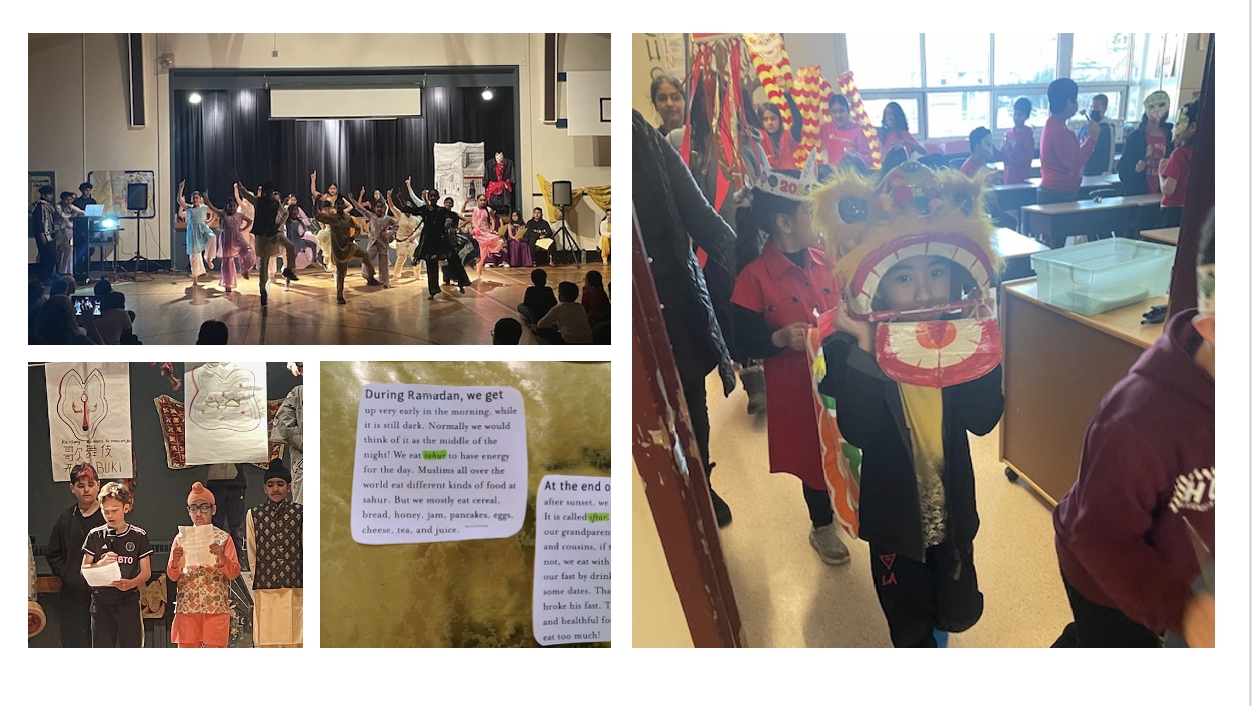
At JT Brown, we understand that students need opportunities to practice leadership. Students engage in a wide range of leadership activities that are both formal and informal. Formal leadership opportunities include lunch monitoring, running assemblies, sports day committee, technology crew, and daily announcers. Informally, our learners understand how important their community and environment is, and know that helping others is important.
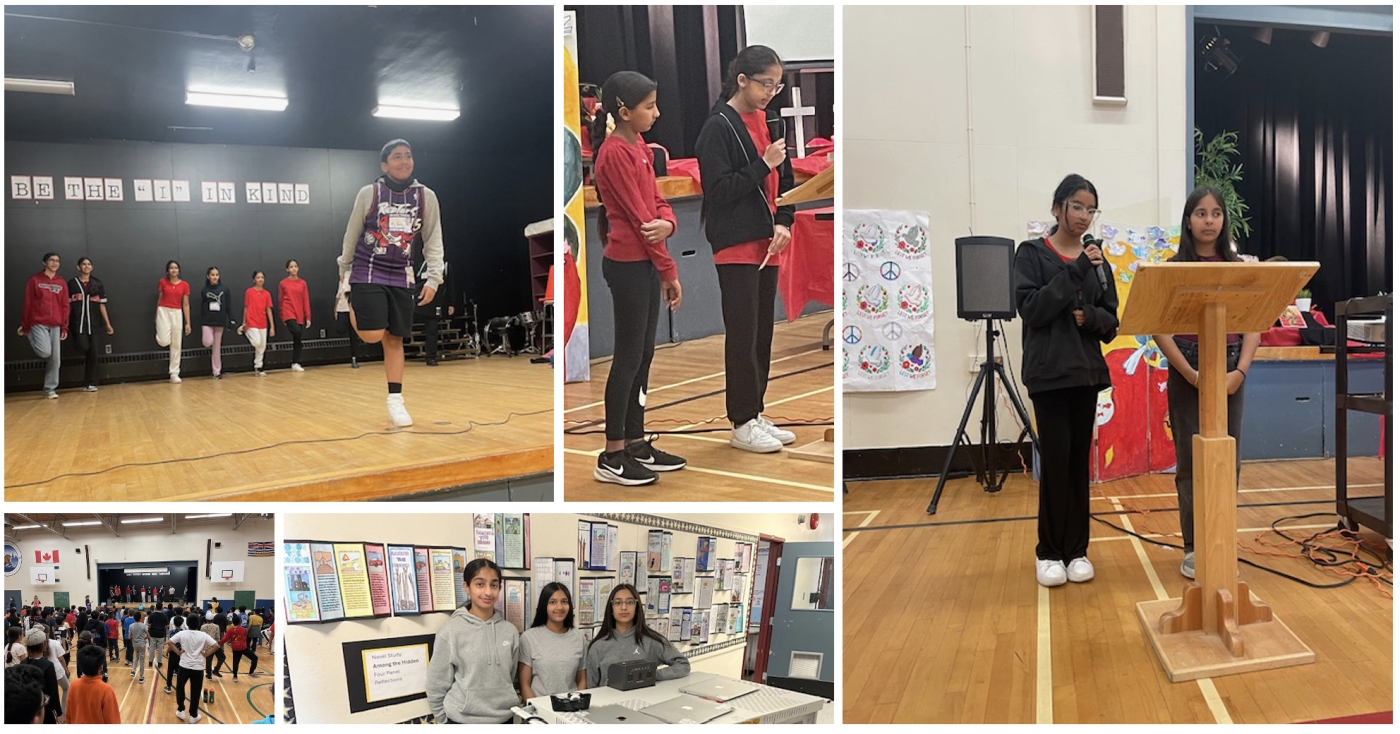
Our students are friendly and supportive, and they understand being new can be difficult. We are always ready to invite new friends to play, give a tour of our building, or help learn a new language.
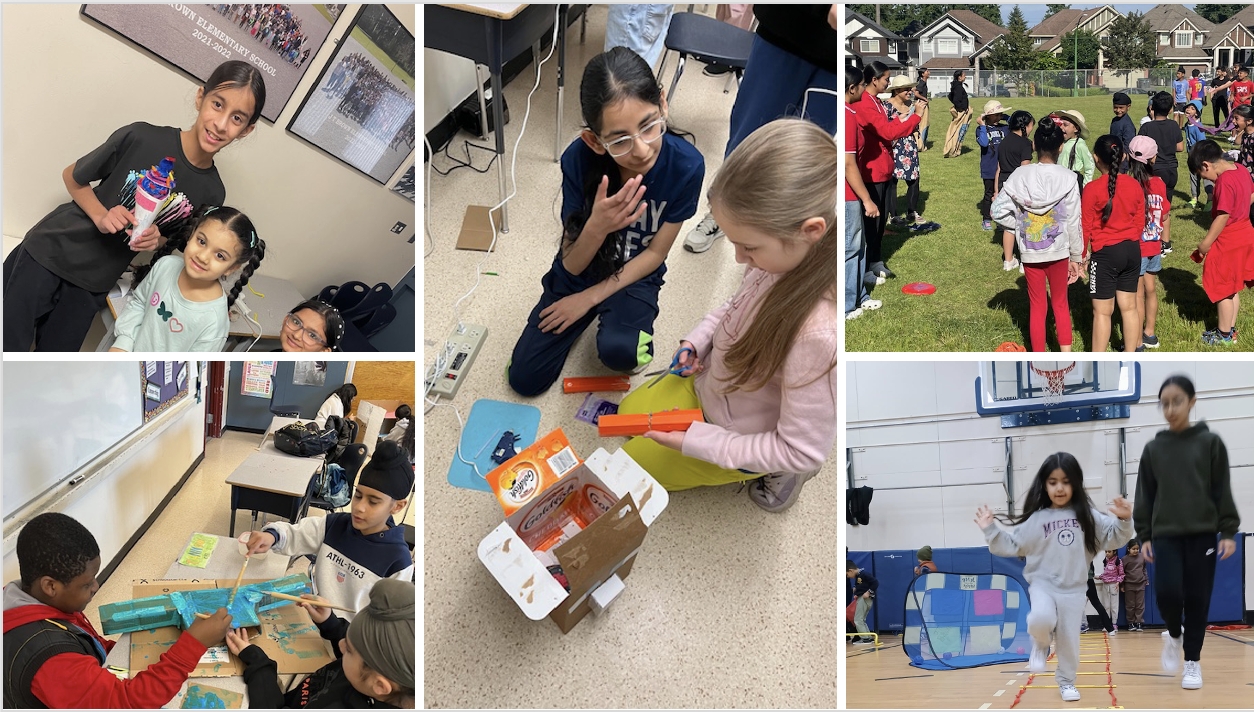
Students and staff at JT Brown are committed to learning the history of the First Peoples. Our school community understands the importance of sharing history, culture and stories that celebrate and educate. We look for, and use authentic resources, created by Indigenous authors, and look forward to learning during the First Peoples' Week in Residence. Our learning about First Peoples' experiences, culture and history is woven through each day at JT Brown. This year, we connected with neighboring elementary schools at Tamanawis Secondary (our local high school) to provide opportunities for Indigenous students to spend time together. The goal is to help Indigenous students who may be one of a very few at elementary school connect with others in the community, learn together and become familiar with the high school.
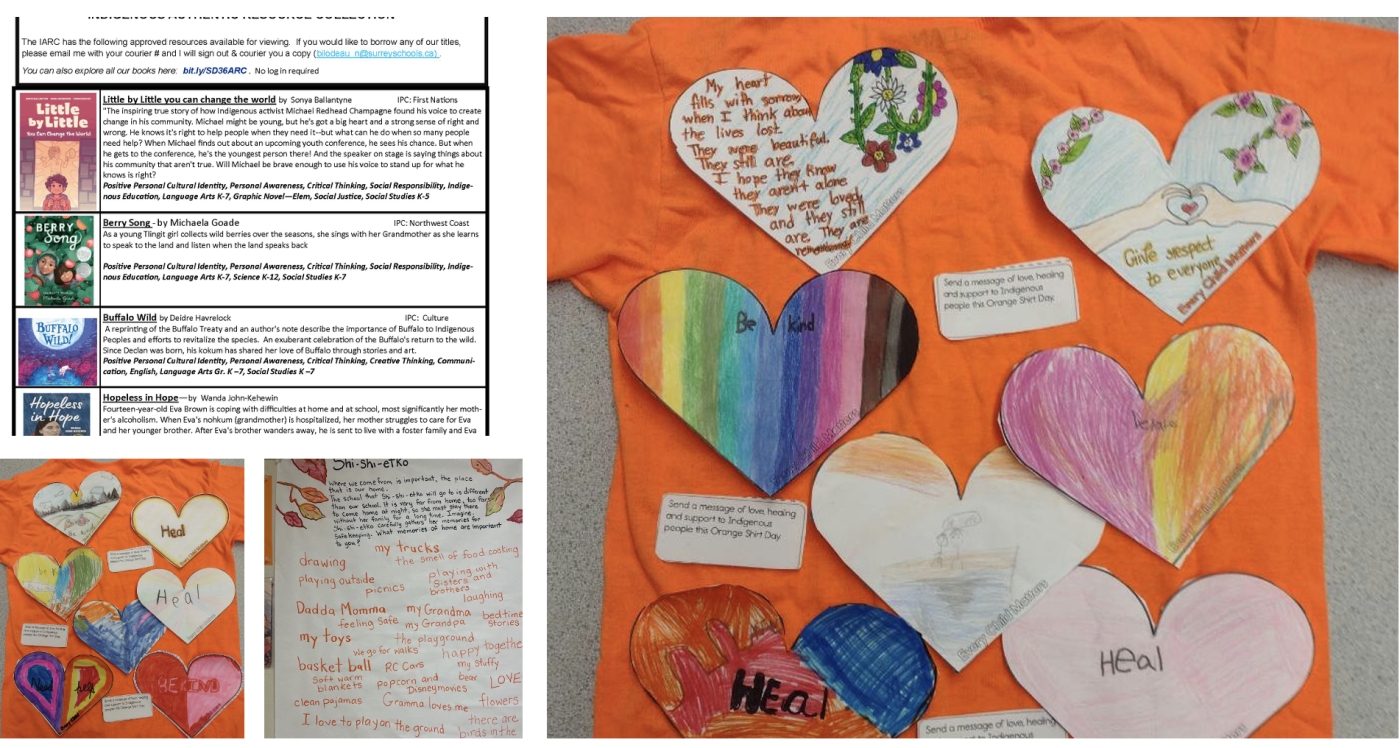
Building community and connections has been a focus at JT Brown Elementary. Our students attend Tamanawis Secondary from grade 8 to grade 12. Leadership Students from Tamanawis Secondary support our school community. They help supervise and cheer us on when we are participating in the Terry Fox Run. Leadership Students walk over to JT Brown Elementary to play games with the younger children. Teachers sign up for a block and the Leaders are provided with board and card games. This has been a very popular activity among students and staff. The goal is to help students build conversational and vocabulary skills, in addition to some math and social skills such as turn taking for younger students or students with diverse needs.
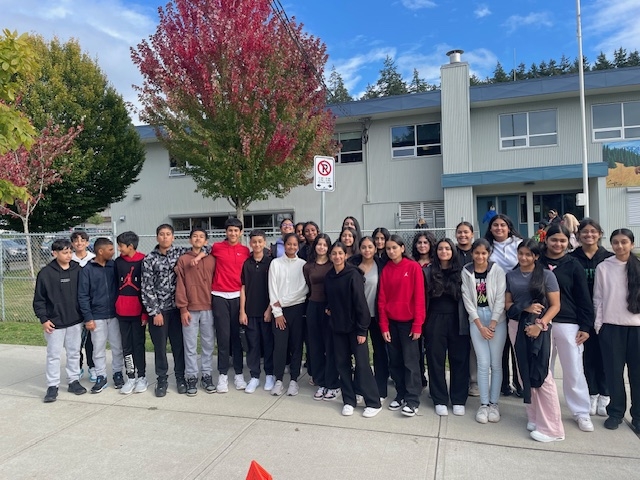
Every spring, the staff at Tamanawis Secondary host events that bring the grade 7 students from the feeder schools to become familiar with the high school. Grade 7 students participate in a basketball tournament and a scavenger hunt at the "Tamazing Race". The grade 7 students are made to feel welcome and valued as "future Tamanawis Wildcats".
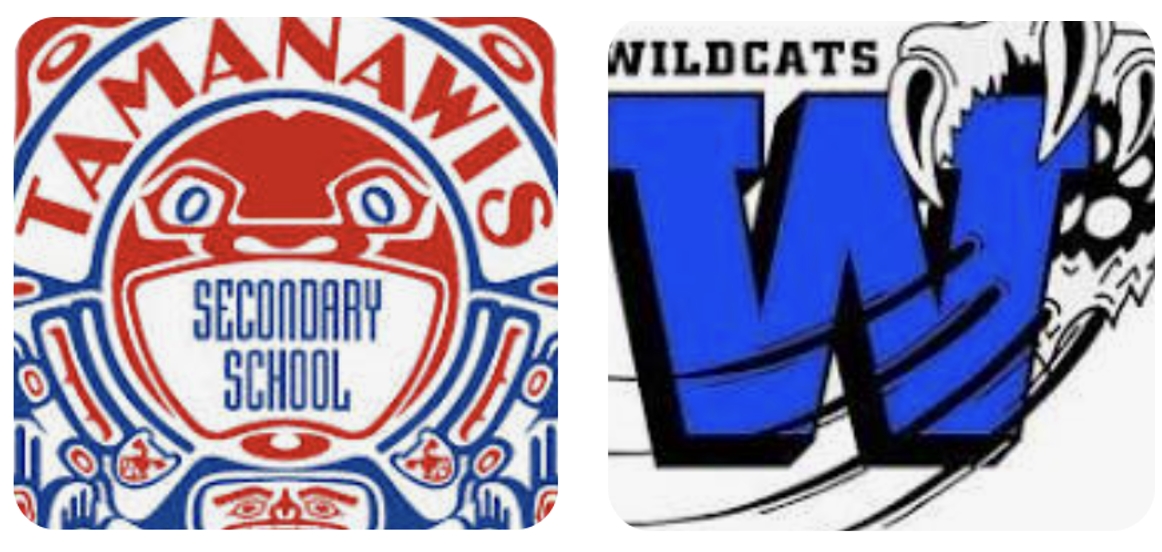
Being active is important for all community members and at JT Brown, we encourage students and staff to try new things. Many students try sports for the first time in elementary school, and many staff members learn to coach here too! This year we had a very successful volleyball season, coming in first at playday! Basketball season was full of learning opportunities during intramural practices and games lead by skilled teachers. Students who have experience playing basketball, are encouraged to balance a competitive spirit with fun and leadership. They quickly learn how to teach skills and encourage newer players. This spring we also had an extremely successful badminton season with many wins and lots of fun. We are so proud of our student athletes and their coaches.
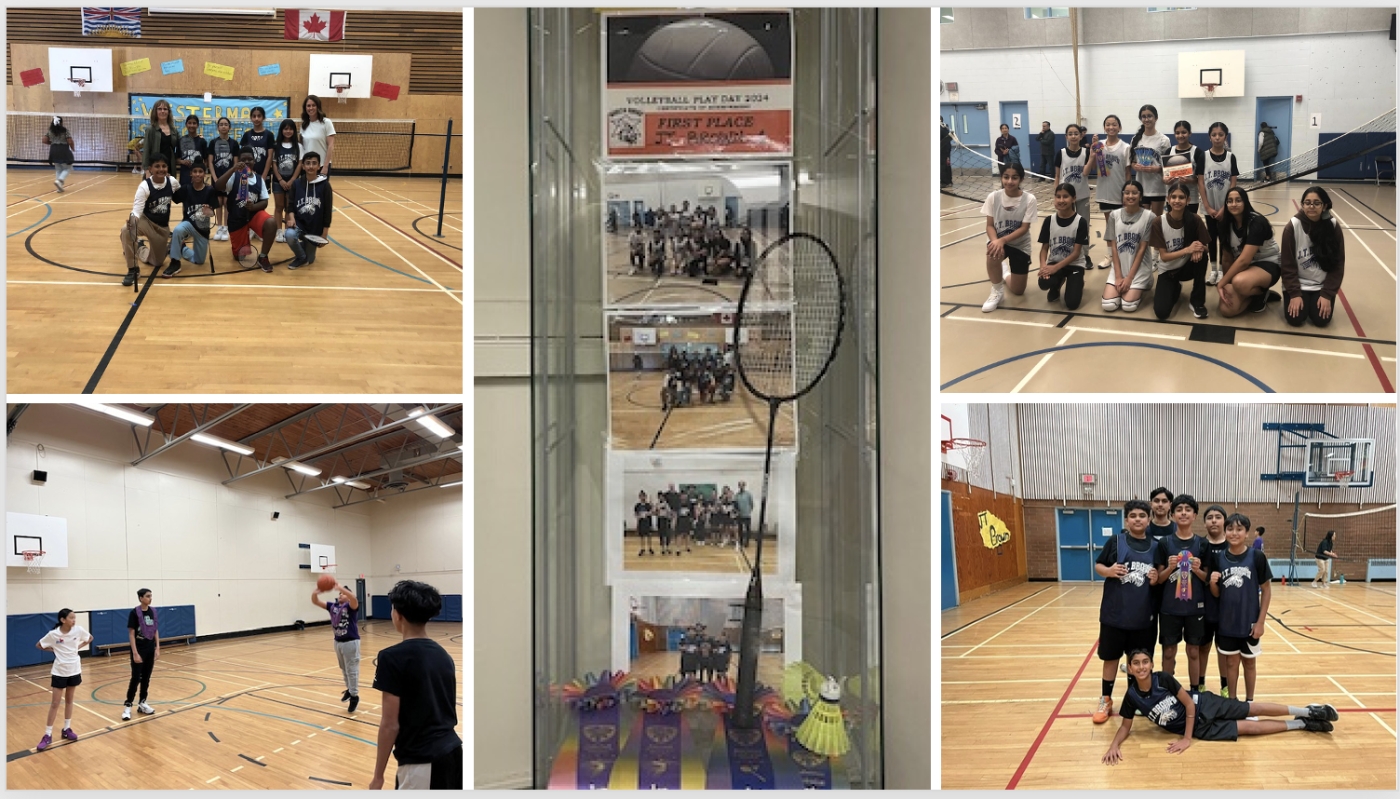
At JT Brown Elementary, we are a strong community that is committed to making students and families feel valued, safe and like they belong...and we have a lot of fun!
OUR LEARNERS
Literacy is a fundamental life skill. It is the ability to read, write, speak, and think in a way that lets us communicate effectively and make sense of the world. Communication – a core competency embedded across all areas of learning in BC’s curriculum – is central to supporting our learners develop their literacy skills as they collaborate, problem solve, share ideas, exchange information, and express their individuality.
Students learn new information, build their vocabulary and expand on their ideas through reading. They use language to identify, create, and share ideas, feelings, opinions, and preferences. The students understand the importance of reading for information and understanding. They also know that having an abundant vocabulary allows them to express their thoughts and ideas, and understand others.
Our learners work hard to grow their reading skills. Primary students and new English language learners work hard to understand the connection between letters and sounds, and staff use engaging and researched-based approaches to teaching. This awareness of letters and their corresponding sounds is called Phonemic Awareness. In the beginning stages of writing, students memorize the letters and sounds which creates a "code" called phonics. Using this "code" or phonics, students begin to read short words that have a consonant, vowel, consonant (CVC) pattern. As students progress, they learn more about words and apply knowledge of phonemic patterns to their reading.
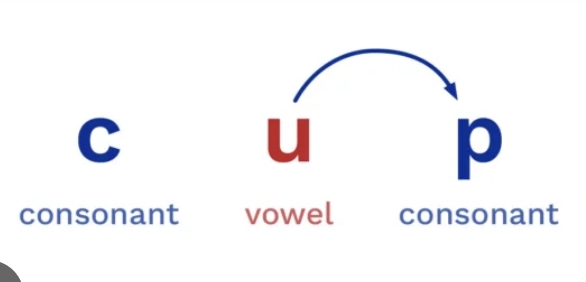
The students understand the importance of reading to learn and reading for fun. Students are able to explore vocabulary and new ideas through reading. They are able to access help and support in learning new English vocabulary and reading skills.
"Going to LST has helped me learn English faster and let me practice and ask questions"
- Intermediate ELL student
Students love all kinds of stories that are shared with them. Teachers often read novels out loud over a period of time to students while facilitating discussions around character analysis, inferencing, comprehension and connection. Reading picture books to all students provides an opportunity for them to absorb information and enjoy literature. More specifically, if the reader is a guest (such as the principal), the experience has a novelty that draws their attention even more.
Stories and other texts help us learn about ourselves, our families, and our communities. In order to communicate, students require an understanding of words and language.
OUR FOCUS
Literacy is our Focus
Literacy is a core competency embedded across all areas of learning in BC’s curriculum and is central to supporting our learners develop reading, speaking, writing and listening skills as they collaborate, problem solve, share ideas, exchange information, and express their individuality.
What Changed and Why?
One year ago, we became curious about students' reading at JT Brown Elementary.
"We have shifted to a heavier phonics focus in teaching reading...how is that affecting students' literacy skills? It feels like we need to focus on reading to help build background knowledge and vocabulary."
- LST Teacher
The staff have shifted from a focus on writing to reading, engaging in professional learning grounded in the science of reading.
Staff discussed the importance of reading:
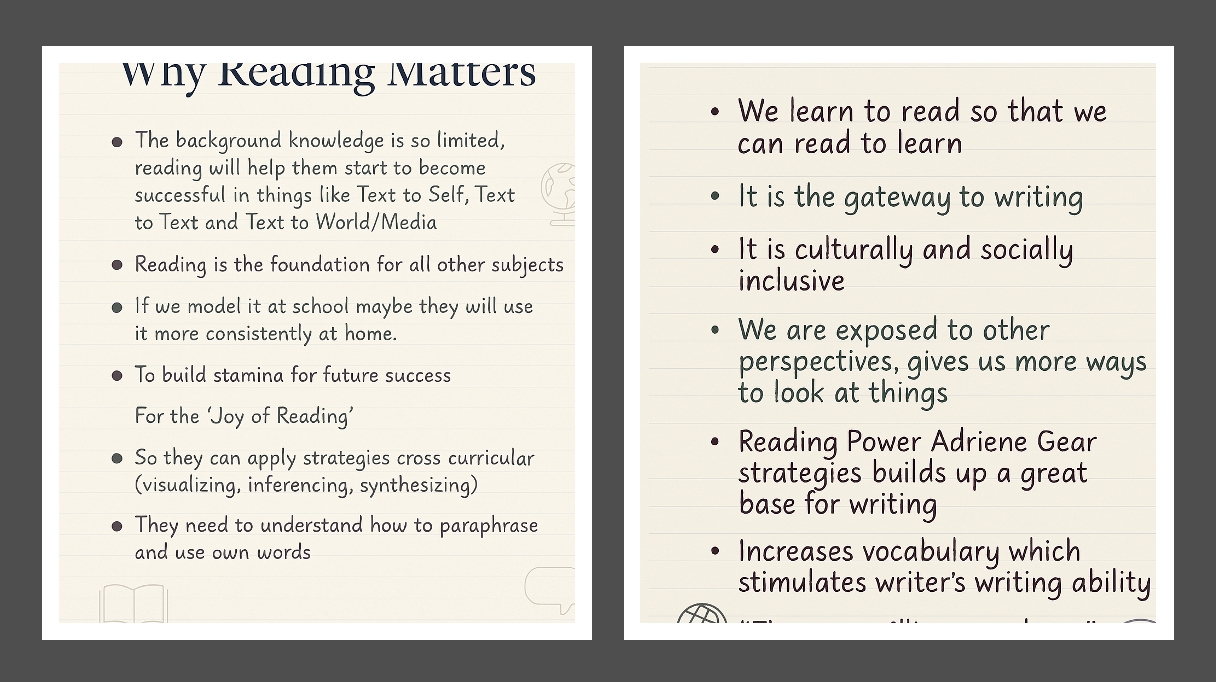
- The JT Brown Teaching Staff
Why Reading?
Reading is a complex skill including decoding of letters and their sounds, comprehension and connection. We aim to build literacy skills including and beyond vocabulary in students so they feel confident and powerful to express themselves.
Building vocabulary will help achieve the following goals for our learners:
- Students know and understand the relationships between letters and sounds.
- Students can build on phonemic awareness to decode and understand unfamiliar words.
- Students improve comprehension and read for information and understanding.
- Students build background knowledge and their vocabulary in language through reading.
Students read words in many forms such as poetry, letters, scripts, descriptions, books, etc. In combination with building a large vocabulary, students are practicing comprehending words in new ways.
Students use a variety of strategies to help them comprehend what they are reading. How do these strategies help students, and in what ways? Knowing each student allows staff to guide them to reading materials that are at an appropriate level. Classroom teachers and LST teachers work together to gather materials that support a student's learning at a level that is not too easy or too difficult.
Students are motivated to read about things they know and about what interests them. They are encouraged to discuss what they read and ask questions about literature. How does background knowledge support comprehension? Do our students have enough decoding skills, vocabulary and experiences to understand effectively?
"Taking time to define words that are unfamiliar to students while reading a novel will improve their understanding during the novel study and also in other related subjects, such as Social Studies...it also helps to re-visit the new vocabulary a few times"
- Upper Intermediate Teacher
What We Will Do
Reading begins with letters and sounds. Following the science of reading, our staff is focussed on first ensuring students at all levels have a solid phonemic awareness. They then understand how to build on those skills and help students become confident readers who are able to comprehend what they read.
"A strong focus on the basic CVC words and phonics is working for my students"
- LST Teacher
Students in upper primary and early intermediate grades will have had a targeted and significant exposure to phonemic skills and will move to building more vocabulary and reading comprehension skills. Teachers are curious about the bridge between phonemic awareness and the ability to build language and comprehension skills. Furthermore, upper intermediate teachers will provide consistent instruction in word patterns to help students decode more complex words.
OUR NEXT STEPS
How Have the Students Been Doing?
Literacy is a fundamental life skill. It is the ability to read, write, speak, and think in a way that lets us communicate effectively and make sense of the world. Communication – a core competency embedded across all areas of learning in BC’s curriculum – is central to supporting our learners develop their literacy skills as they collaborate, problem solve, share ideas, exchange information, and express their individuality. Overall, our students are require support for language development and literacy skills. We want to increase instruction rooted in reading science with a focus on phonemic awareness skills at the early stages of reading in English, and moving on to comprehension of various sources of literature.
 FSA results show us that Literacy skills have been trending upwards to pre-Covid levels, however seem to have dropped significantly for grade 4 students (12.39% on track) and somewhat for grade 7 students (55% on track). It should be noted that there was an exceptionally low number of participants in the FSA during the 2020-21 (7-gr. 7)(7-gr. 4), 2021-22 (0-gr. 7)(8-gr. 4), and the 2022-23 (6-gr.7)(12-gr. 4) school years. Results from the 2023-24 school year show that students were generally improving, and were following the district trend, however the 2024-25 school year shows a decrease in literacy skills.
FSA results show us that Literacy skills have been trending upwards to pre-Covid levels, however seem to have dropped significantly for grade 4 students (12.39% on track) and somewhat for grade 7 students (55% on track). It should be noted that there was an exceptionally low number of participants in the FSA during the 2020-21 (7-gr. 7)(7-gr. 4), 2021-22 (0-gr. 7)(8-gr. 4), and the 2022-23 (6-gr.7)(12-gr. 4) school years. Results from the 2023-24 school year show that students were generally improving, and were following the district trend, however the 2024-25 school year shows a decrease in literacy skills.
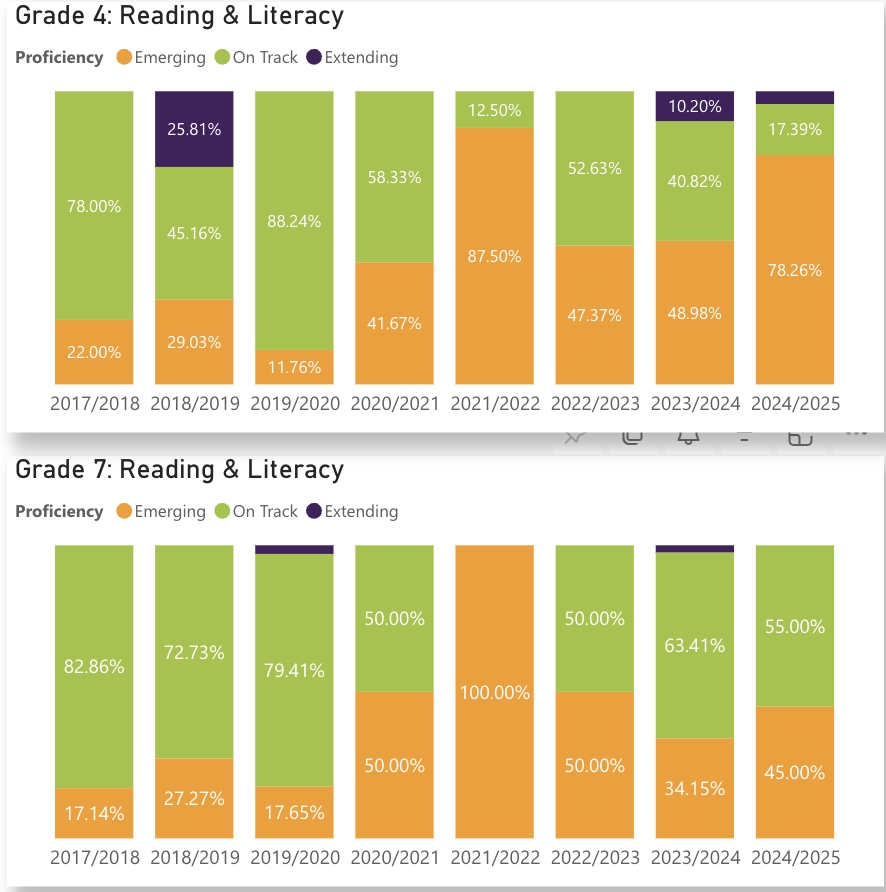 Analysis of the Data So Far
Analysis of the Data So Far
It is also worth noting:
- There was an increase in students who are ELL in 2023-24, and again in 2024-25 which could explain the increase in the number of students who demonstrate emerging skills. Staff are making adjustments to teaching literacy strategies to meet the needs of new Canadians.
- The FSA participation rate increased significantly in the past two years, therefore the data prior to 2023-24 is not as reliable.
Occasionally at the classroom level, we have noticed an increase in the number of students who are emerging/developing at the end of the school year compared to the beginning of the year. We believe there are a few variables that contribute to this increase:
1) Influx of new students who are new Canadians and new English language learners who are just learning English letters and sounds
2) Missing background knowledge that will help with reading comprehension
Collecting Reading Data
Teachers focused on assessing and teaching decoding words and comprehension skills in students. Students were assessed on basic phonemic awareness in all grades. In upper primary and intermediate grades, there was also a focus on assessing reading comprehension.
Most of the intermediate teachers spent time learning to use the same assessment tool for reading. In the 2025-26 school year, they will focus on gathering information focused on phonemic awareness and decoding skills, and basic comprehension skills in the fall and then again in the spring.
Early primary students were assessed on letter/sound knowledge early in the 2024-25 school year and those who did not master all of the letters and their corresponding sounds were assessed again at the end of the year. The ELPATS offer more comprehensive phonemic awareness assessment of students in grades K through 3.
Small Group Analysis
Assessment of early primary students showed that by the end of the school year, a significant number of students had not mastered all of the letters and their corresponding sounds. While students do improve from over the first few years of school as noted below in the ELPATS data (the first graph indicates the phonemic awareness mastery in K and the second indicates the same phonemic awareness mastery in grade 1), we want to see students gaining reading skills more quickly and increase basic letter/sound skills by the end of Kindergarten.
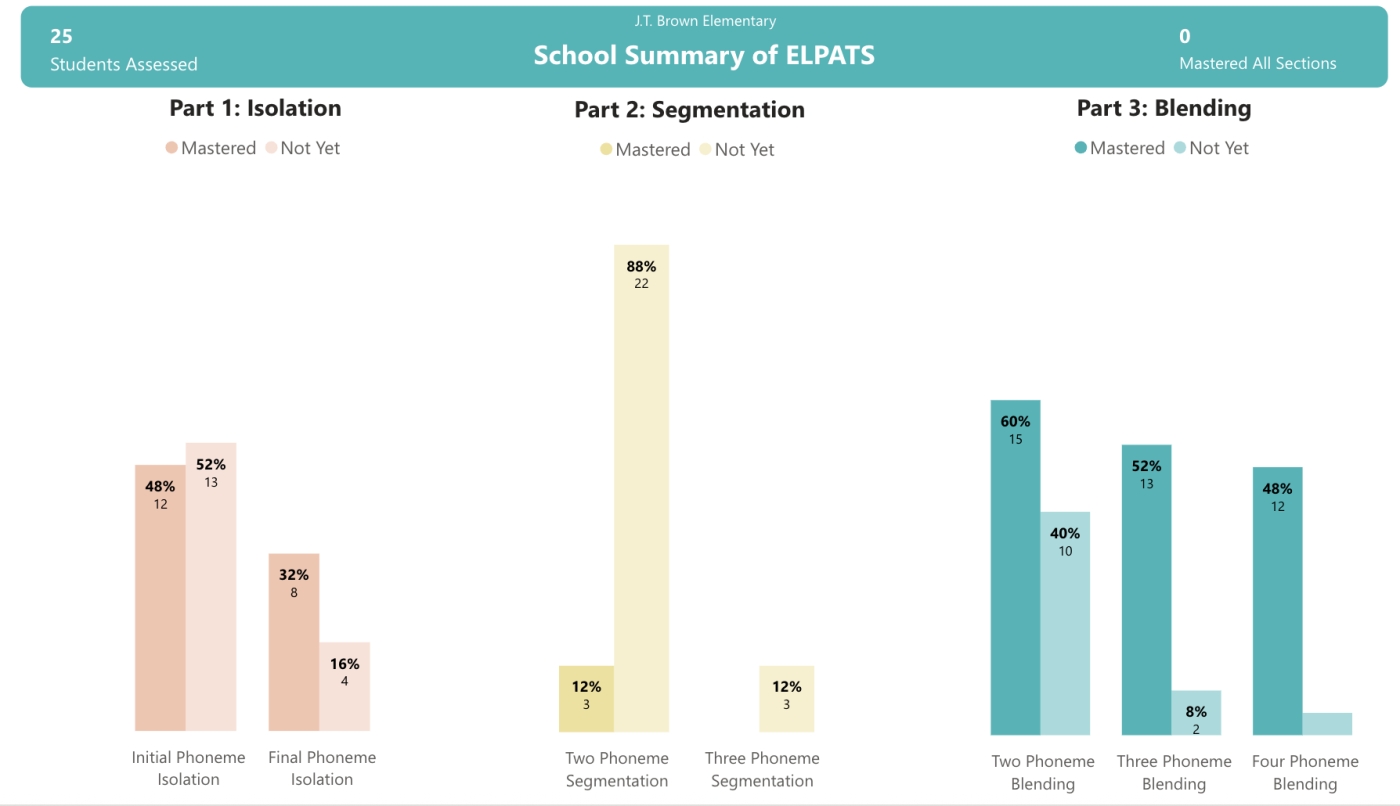
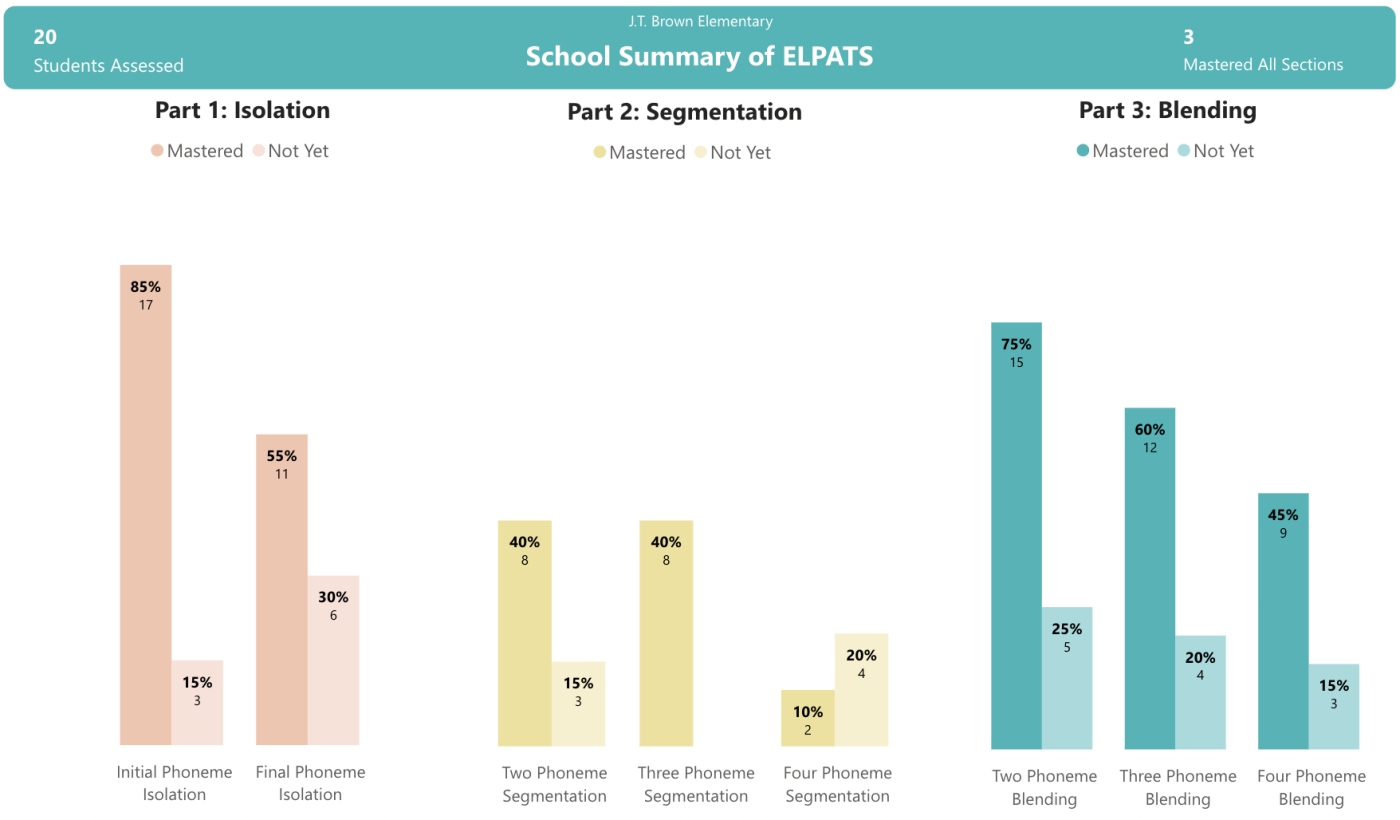
Indigenous Students
There is an exceptionally small population of Indigenous students at JT Brown Elementary. Each Indigenous student is supported by an Indigenous Connections Teacher (ICT) periodically through the year. With regards to reading, the Indigenous students at JT Brown are on track and enjoy reading about topics that are of interest. Teachers and the Teacher Librarian ensure that there is literature created by Indigenous authors and opportunities to share and discuss this content with all students.
Moving forward, the LST team will work with early primary teachers to introduce letters/sounds more quickly, in small group settings and with consistent examples/language. Students will be supported by the LST team and the teacher librarian until they master all phonetic aspects for early reading.
"Using consistent pictures associated with sounds helps our students learn letters more quickly. We will have the classroom teachers and the teacher librarian use the same pictures coordinated with sounds to improve learning."
- LST teacher
FSA data also shows us that 78.36% of students in grade 4 are emerging and not yet on track with literacy skills. Our team believes that a focus on early phonemic awareness as is rooted in the science of reading, will improve literacy skills by the time that students reach intermediate grades.
K teachers will spend September getting students settled and then LST will meet with K and 1 teachers to discuss which students will be pulled to spend 15 minutes at the beginning of each day reviewing letters and sounds in methods aligned with the latest research on reading. Care will be taken to identify students who are comfortable and confident at first to leave the classroom and go with another teacher. The LST team will make the learning fun with songs, games and enticing activities all linked to phonemic awareness. In addition, the Teacher Librarian will be aligned with the methods and language used to deliver instruction during student library time and some collaboration time.
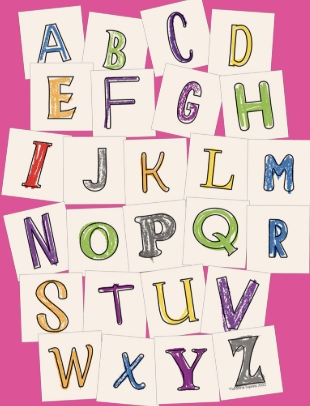
In addition, we will have the primary staff using the same vocabulary to introduce and teach letter sounds. The Teacher Librarian will be aligned with the methods and language used to deliver instruction during student library time and some collaboration time. This will help students who are English Language Learners build vocabulary and learn sounds with words that are familiar and hopefully reduce the overwhelming abundance of words. Consistency from class to class will hopefully help students be more successful year over year.
"Consistent repetition helps students retain letters and their sounds. ELL students will learn to discern slight differences in sounds i.e. pulled vs jumped = pull-d vs jump-t."
- LST teacher
The staff at JT Brown is excited to implement many ideas to further enhance the reading skills of their students and look forward to a focus on reading.
